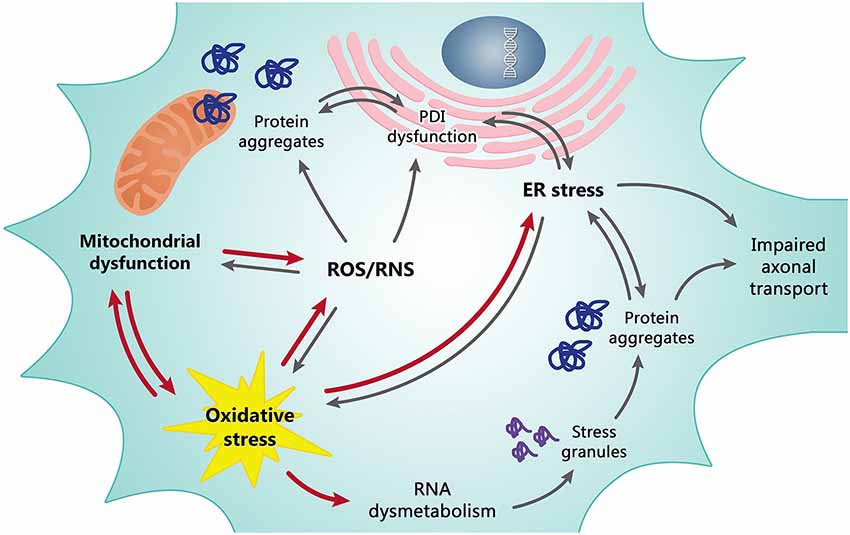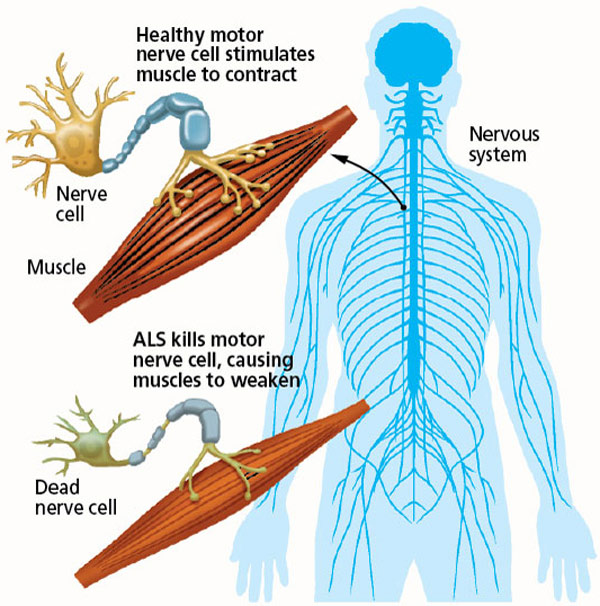Amyotropic Lateral Sclerosis (Lou Gehrig’s Disease) just might be one of the most terrifying conditions out there. For starters, at this point in research, 95% of cases are defined as sporadic. That essentially means that there is no known cause or biomarker that can determine one’s susceptibility of having ALS in the future.
Oxidative Stress and ALS

Motor neurons become bombarded with oxidative stress from substances such as radical oxygen species which leads to multiple different responses from the cell. SOD1 which is an enzyme that captures these radical oxygen species and converts them into a manageable molecule that can be destroyed within the cell. In some cases of ALS, SOD1 enzymes are not properly formed, allowing the radical oxygen species roam within the cell causing oxidative damage.
Stress Granules

When certain cells are exposed to oxidative stress they begin to form complexes of proteins and untranslated mRNA to become what is called a stress granule. These granules can perform several different tasks such as signaling, the decay of RNA, and apoptosis (cell death). Stress granules may seem like they could be a problem because they can lead to cell death, but they are a designed protective measure by the cell that helps protect the cell while it is experiencing oxidative stressors. The problem comes from the overabundance of stress granules due to prolonged oxidative stress. This leads to a build-up of granules blocking other cellular processes leading to further dysfunction within the cell.
Big Picture?

So, what does all this oxidative damage do? Over time these motor neurons are killed by the prolonged damage leading to a lack of signal from the brain to various muscles. The slow deterioration of motor neurons leads to muscle weakness and slowly ends up in paralysis of muscles. The scary part is that there isn’t necessarily a defined path that ALS follows in which muscle usage deteriorates. Furthermore, many may not realize that they have ALS symptoms because the age of onset doesn’t come until people are in their 50s (average) so they may view these symptoms as a normal process of aging.
Prevention and Treatment
This is the more disheartening aspect of ALS because there is no surefire treatment that has extended the patient’s life significantly. There is some recent research into using antioxidants to help slow down the progression of ALS but they are too recent to find out the results of the study. This seems to pose the question, “What do I do to prevent myself from getting ALS?” Some may say that there is no way to prevent ALS from happening, but I would venture to assert that antioxidants wouldn’t hurt. Clearly, we are missing a piece that might help us figure out the cure but that might be further down the road so at this point the best bet is to live life to the fullest until the inevitable comes.